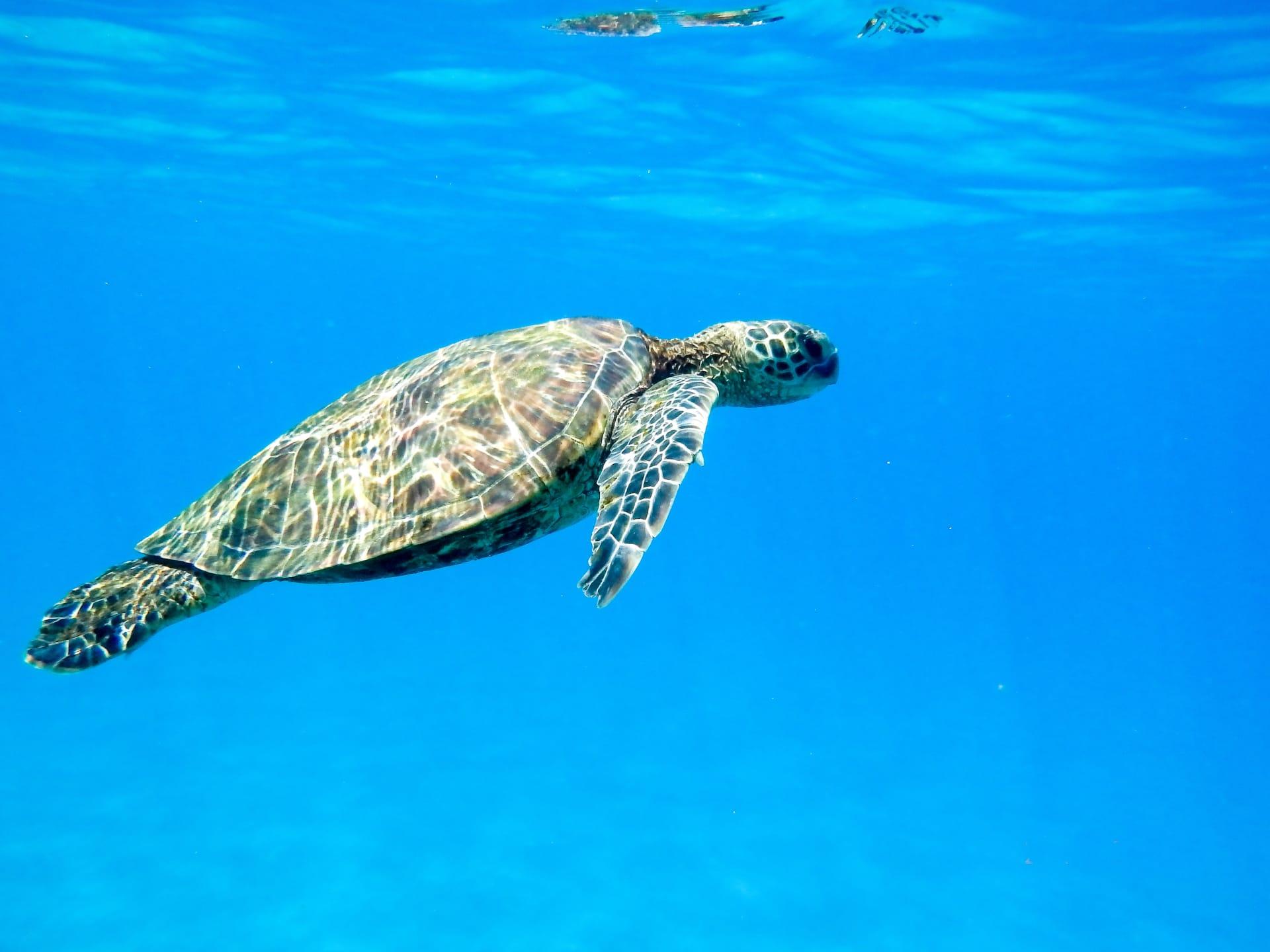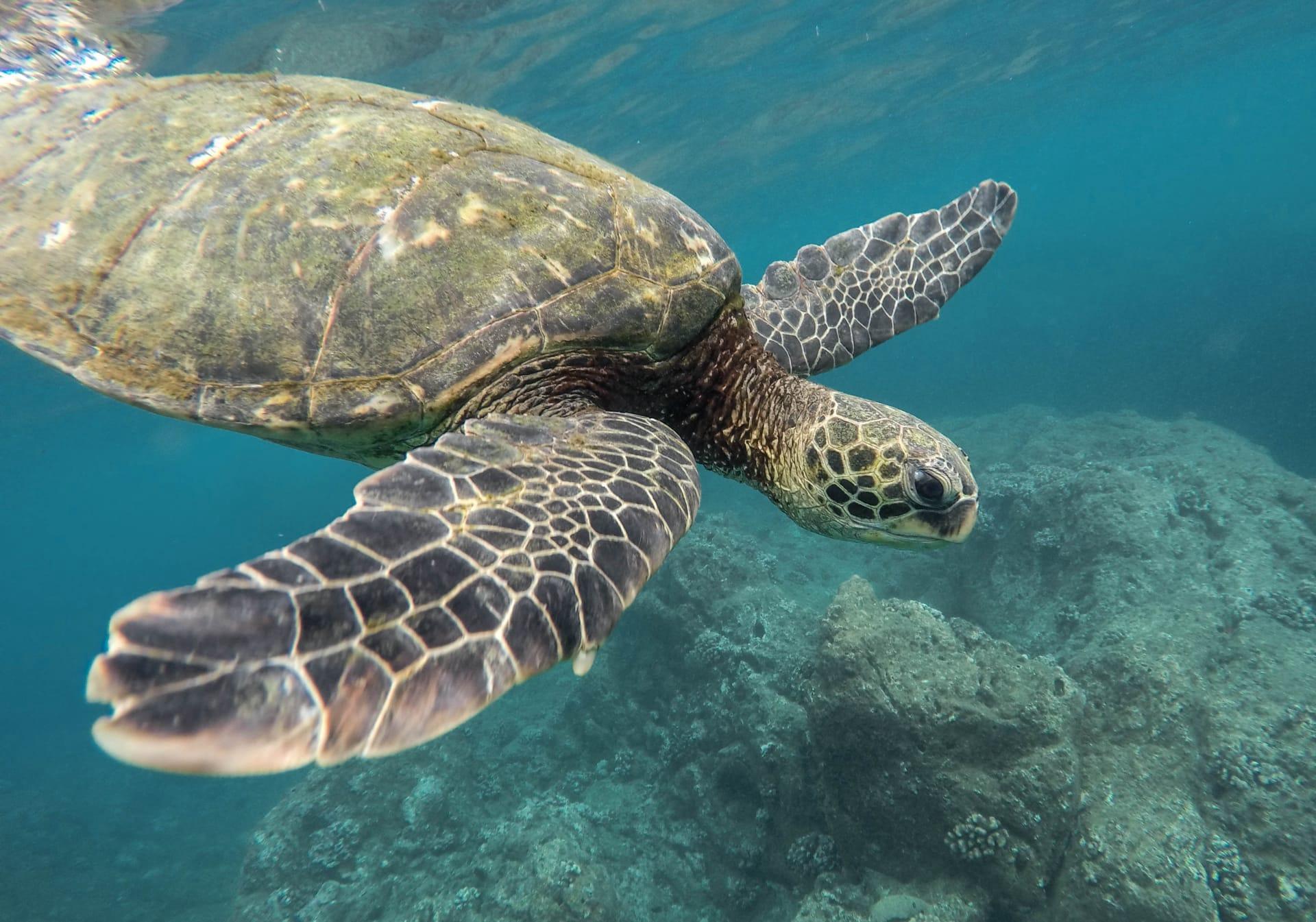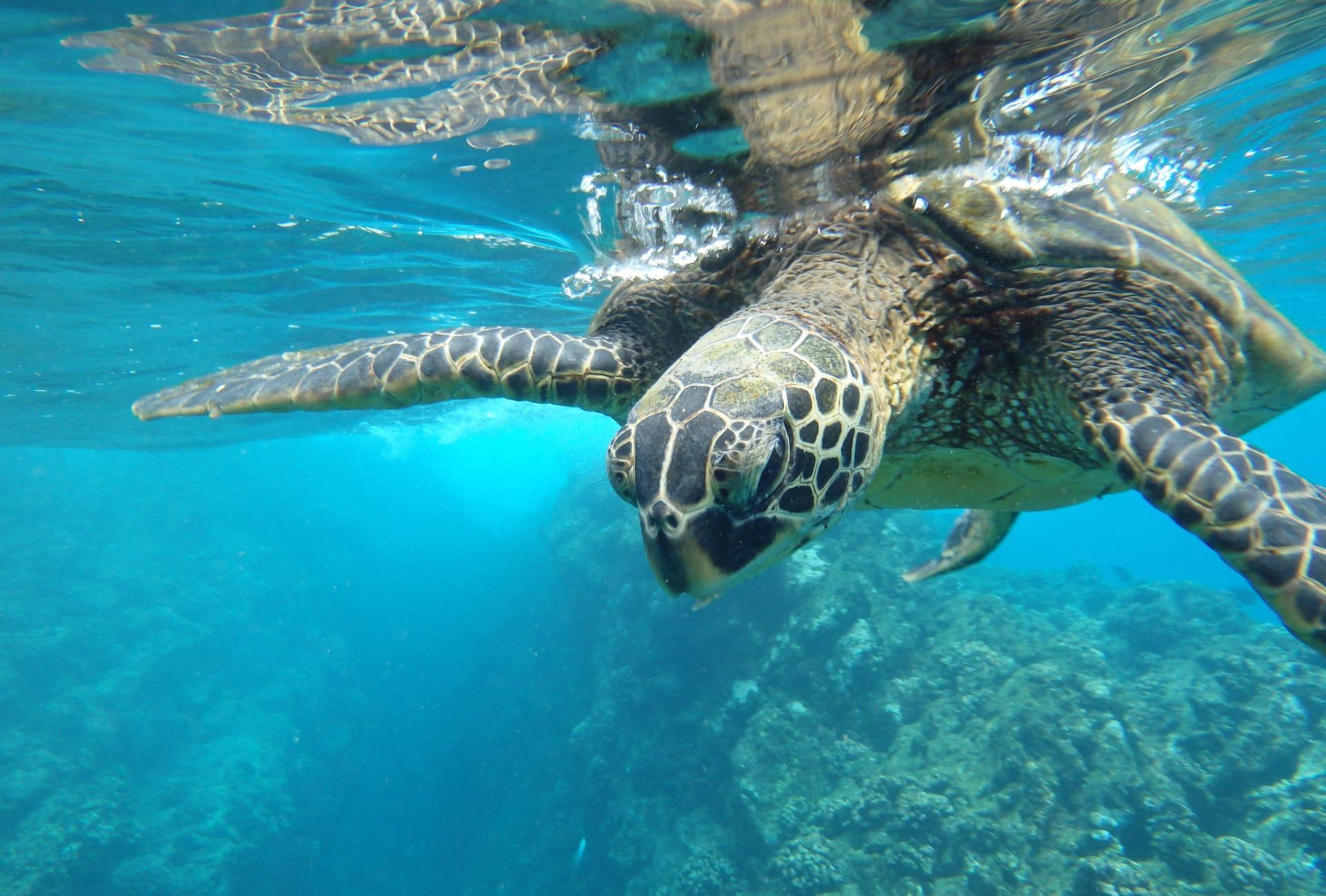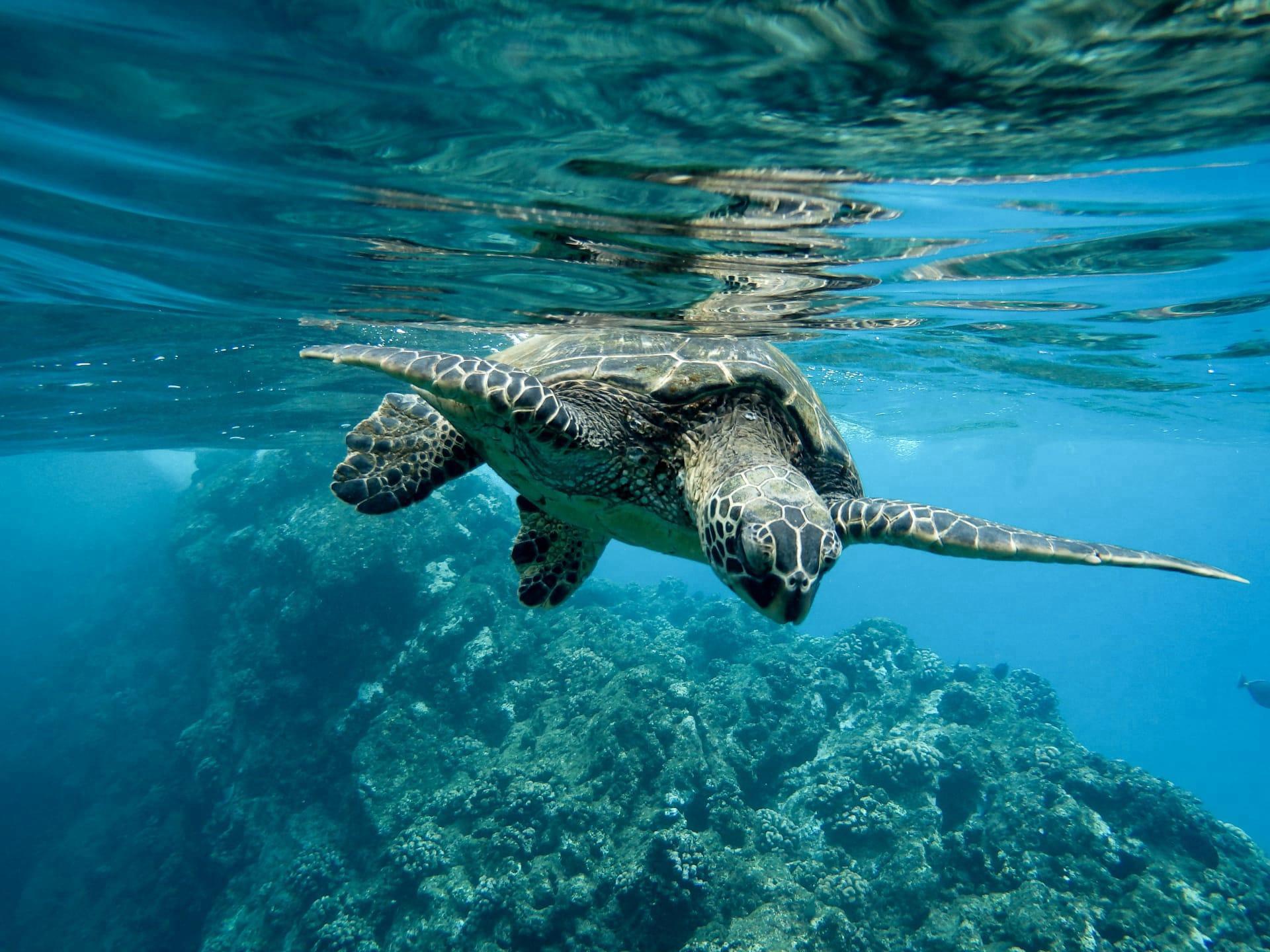Green Sea Turtle
- Home /
- Mini Encyclopedia /
- Animal /
- Green Sea Turtle
1
The green sea turtle, scientifically known as Chelonia mydas, is a large marine reptile belonging to the family Cheloniidae. Its distinctive features include a heart-shaped carapace (shell) that varies in color from olive to brown, with radiating patterns of lighter stripes. Adult green turtles typically measure around 3 to 4 feet in length and can weigh between 150 to 400 pounds. They are known for their smooth carapace and flipper-like limbs, adapted for life in the ocean. Unlike other sea turtles, green sea turtles have a serrated jaw which helps them in their herbivorous diet, primarily consisting of seagrasses and algae.
Green sea turtles are found in tropical and subtropical waters around the world. They nest in more than 80 countries, with significant nesting sites located in the Caribbean, Southeast Asia, Africa, and on the eastern shores of the United States. These turtles prefer shallow coastal areas like lagoons and bays for feeding, but they are also known to travel long distances. The migratory nature of green sea turtles is quite fascinating; they are known to travel over 1,400 miles between their feeding grounds and nesting sites. This species' preference for warmer waters has made them particularly vulnerable to the effects of climate change, altering their habitats and nesting patterns.

2
Question: Do green sea turtles eat fish?
Answer: Contrary to popular belief, green sea turtles are primarily herbivores, especially as they mature. Young green turtles might occasionally consume invertebrates like jellyfish and sponges, but their diet predominantly consists of seagrasses and algae. This diet shift is critical for their development. The consumption of plant-based materials influences the color of their fat, which is where they get the name "green" sea turtle from. This misconception about their diet might stem from observing younger turtles or confusing them with other omnivorous turtle species. Understanding their diet is crucial for their conservation, as it highlights the importance of protecting their marine plant-based habitats.

3
Green sea turtles have developed unique survival strategies to thrive in the ocean. One of their key strategies is their ability to hold their breath for long periods, which is essential during deep dives for food or when resting underwater. They can stay submerged for several hours during rest by slowing their heart rate to conserve oxygen. This capability varies with activity; for instance, during intense activity, they may need to surface every few minutes.
Another survival strategy of green sea turtles is their migratory behavior. They travel long distances between feeding grounds and nesting sites, a journey that enhances their survival by spreading their genetic diversity across different regions. This migration also plays a crucial role in their reproductive success. Females often return to the beaches where they were hatched to lay their eggs, a phenomenon known as natal homing. This instinctual behavior ensures that they lay eggs in environments favorable for the survival of their offspring.

4
In the ecosystem, green sea turtles play a vital role in maintaining the health of marine environments. Their herbivorous diet helps in controlling the growth of seagrasses and algae. This grazing maintains the seagrass beds, ensuring these habitats remain healthy and productive. Healthy seagrass beds are crucial as they provide breeding and developmental grounds for many species of fish and other marine life.
Furthermore, green sea turtles contribute to nutrient cycling. Their digestion of vegetation releases nutrients back into the ocean, enriching the marine ecosystem. This process supports the growth of more vegetation and a healthy food chain. Additionally, their nesting behavior affects coastal ecosystems. When turtle eggs hatch, the leftover eggshells provide nutrients to beach vegetation. The digging activity during nest building can also aerate the sand, promoting a healthier beach environment.

5
Film: "Voyage of the Lonely Turtle" is a fascinating documentary by the United States, released in 2007. This film follows the incredible journey of a female green sea turtle as she traverses the Pacific Ocean from her feeding grounds to her nesting site. It beautifully captures the challenges and dangers she faces, including predators and environmental threats, highlighting the resilience and migratory patterns of these majestic creatures.
Book: "The Biology of Sea Turtles" by Peter L. Lutz and John A. Musick, published in the United States in 1997, offers a comprehensive overview of sea turtle biology. While it covers various species, it provides detailed insights into the green sea turtle's life cycle, behavior, and conservation status. The book is a valuable resource for researchers and enthusiasts alike.
Book: "Sea Turtles: A Complete Guide to Their Biology, Behavior, and Conservation" by James R. Spotila, released in 2004 in the United States, is an engaging and informative book. It delves into the world of sea turtles, with a focus on the green sea turtle, covering aspects from their evolutionary history to current conservation efforts. The author's passion for marine biology and conservation shines through, making it an enlightening read for anyone interested in these ancient mariners.